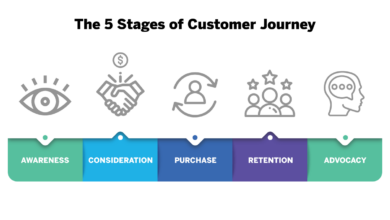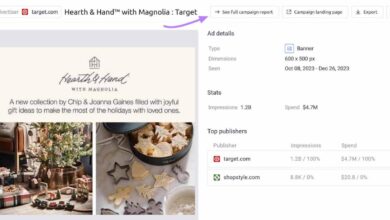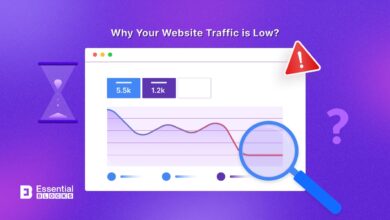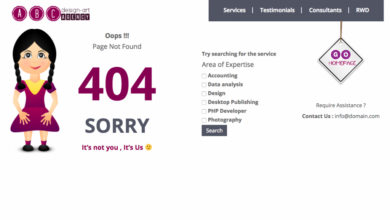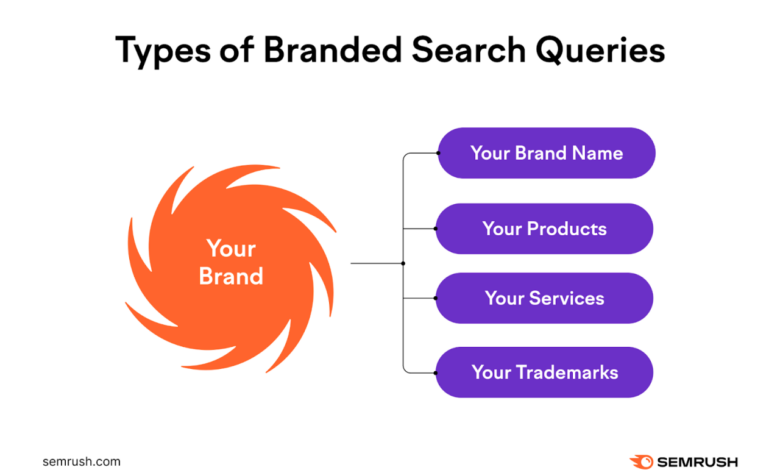
Branded Search A Deep Dive
Branded search is more than just typing a company name into Google. It’s a powerful window into customer behavior, brand perception, and crucial insights for marketing strategies. Understanding how users interact with your brand online through branded searches can reveal a wealth of information, from their specific needs to their overall experience.
This exploration delves into the nuances of branded search, examining everything from search volume trends and user intent to how brands can leverage this data for optimization and building stronger customer relationships. We’ll also touch on the impact of evolving technologies like AI and voice search on branded search behavior.
Defining Branded Search
Branded search queries are a crucial aspect of online behavior, reflecting consumer engagement with specific brands. Understanding these queries provides valuable insights into brand perception, customer needs, and potential areas for improvement. This deeper understanding allows businesses to refine their strategies and better meet customer expectations.Branded searches are distinct from general searches, as they explicitly name a company or product.
This focused intent differentiates them, indicating a pre-existing awareness and often a clear purchasing intent. These searches reveal what customers are actively seeking related to a particular brand. Understanding the nuances of branded search behavior is key to effective marketing and optimization strategies.
Characteristics of Branded Search
Branded searches are characterized by their direct mention of a brand name or product. They differ from generic searches, which do not explicitly name a brand. This explicit brand reference distinguishes branded searches and indicates a specific interest in that brand. Brand awareness plays a critical role in driving branded search volume. As brand recognition increases, so does the likelihood of customers searching directly for the brand.
Brand perception significantly impacts search behavior. A positive brand image often correlates with higher branded search volume, signifying trust and consumer preference.
Role of Brand Awareness
Brand awareness is a primary driver of branded search volume. As consumers become more familiar with a brand, they are more likely to directly search for it. This increased recognition translates to a higher volume of branded searches. A strong brand presence often leads to higher visibility in search results, reinforcing brand awareness and positive perception. A company with a well-known brand name, for instance, will likely see a higher volume of branded search queries compared to a lesser-known brand.
Ever wondered how brands dominate search results? It’s all about branded search, optimizing for your own name and brand terms. But be mindful of shady tactics like those detailed in the 29 black hat SEO techniques here. Ultimately, a strong branded search strategy is built on genuine value and user experience, not tricks. This authentic approach will keep your brand at the top of the search results for years to come.
Impact of Brand Perception
Brand perception significantly influences search behavior. Positive brand perception fosters trust and encourages consumers to search for that brand. Customers are more likely to search for a brand they trust and view positively. Conversely, a negative brand image can discourage direct searches and potentially result in lower branded search volumes. This illustrates the importance of brand management and reputation in online interactions.
Types of Branded Searches
Understanding the different types of branded searches provides a deeper insight into customer needs and search intent.
| Search Type | Example | Purpose |
|---|---|---|
| Product Search | “Nike Air Max 90” | Find specific products, often with a purchase intent. |
| Company Information | “Apple customer service” | Gather information about the company, its services, or policies. |
| Location Search | “Starbucks near me” | Find stores or locations of the brand. |
| Review Search | “Adidas Ultraboost reviews” | Gather customer feedback or opinions on products. |
| Support or Help Search | “Amazon return policy” | Access information about product returns, warranties, or support. |
Search Volume and Trends
Understanding the ebb and flow of branded search volume is crucial for any brand. It reveals not only the overall interest in your company but also how your marketing efforts and overall brand perception are impacting your online presence. Analyzing these patterns can highlight opportunities for improvement and inform strategic decisions.Search volume for a brand isn’t static; it’s a dynamic indicator of consumer interest.
Factors like seasonal trends, marketing campaigns, news events, and even competitor activity can significantly influence these volumes. Tracking these changes is essential for understanding the pulse of the market and adapting your strategies accordingly.
Typical Search Volume Patterns
Branded search volume typically exhibits cyclical patterns. High volume often coincides with significant marketing initiatives, such as product launches, advertising campaigns, or major industry events. Conversely, lower volumes may occur during periods of reduced activity or when consumer interest in the brand is subdued. These patterns are not always predictable, and understanding the context is critical.
Influencing Factors
Numerous factors can impact search volume fluctuations. Marketing campaigns, both online and offline, can drive significant increases in searches. Seasonal product demands, such as holiday shopping, can also influence search volume. Major news events related to the brand or industry, positive or negative, can also dramatically affect the number of searches. Finally, competitor actions or market trends can also cause fluctuations.
Tracking and Analyzing Branded Search Volume Trends
Tracking branded search volume requires consistent data collection over a defined period. Tools like Google Trends, SEMrush, and Ahrefs can provide valuable insights. These tools offer detailed historical data, allowing you to identify trends and patterns over time. Importantly, these tools allow comparison against competitor brands.
Comparing Branded Search Volume with Competitor Brand Searches
Analyzing competitor brand search volume provides valuable benchmarking data. Comparing your brand’s search volume to those of your competitors reveals insights into market share, brand awareness, and potential areas for improvement. This comparison can help you identify where you stand relative to the competition and what strategies your competitors might be employing.
Branded Search Volume Fluctuations (Example)
| Date Range | Average Monthly Branded Search Volume | % Change from Previous Month | Notable Events |
|---|---|---|---|
| January 2023 – February 2023 | 15,000 | +10% | Company launched a new product line |
| March 2023 – April 2023 | 16,500 | -5% | No significant marketing events |
| May 2023 – June 2023 | 17,200 | +8% | Major industry conference |
| July 2023 – August 2023 | 18,000 | +4% | Summer promotions |
This table illustrates a simplified example. Real-world data would involve more extensive periods and detail, potentially including competitor data.
Search Intent and User Behavior
Understanding the motivations behind branded searches is crucial for optimizing your search strategy. Consumers often have specific needs and expectations when interacting with a brand through search. This section delves into the nuances of search intent, user behavior, and the journey a user takes when engaging with a brand’s name or products.Search intent significantly impacts the results and engagement a brand experiences.
Knowing the user’s underlying motivations is key to providing relevant information and a positive user experience. By understanding how users behave when searching for a brand, rather than a generic product, you can tailor your content and marketing strategies to meet their needs effectively.
Common Search Intents Behind Branded Searches
A user searching for a brand often has specific goals in mind. These intents can range from wanting to learn more about a company to making a purchase. Some common search intents behind branded searches include:
- Information Gathering: Users might be looking for details about a brand’s history, products, services, or contact information. For example, a user searching “Nike history” is likely seeking information rather than directly purchasing a product.
- Product Discovery: Users might be researching specific products or services offered by the brand. A search for “Apple iPhone 14 Pro Max reviews” indicates a user interested in discovering the specifications and user experiences of a particular product.
- Brand Comparison: Users might be comparing a brand with competitors. Searching “Adidas vs. Nike running shoes” demonstrates a user seeking comparative information to inform their purchase decision.
- Purchase Consideration: Users might be actively considering a purchase and seeking more information before making a decision. A search for “Best prices on Dell laptops” shows a user focused on finding the most cost-effective option.
- Customer Service: Users may need assistance with an issue, such as tracking an order or resolving a product defect. A search for “How to return an Amazon item” indicates a user seeking customer support.
User Behavior Differences in Branded vs. Generic Searches
Users searching for a brand often have a higher level of brand awareness and pre-existing knowledge compared to those searching for generic products. This difference in familiarity shapes their search behavior and expectations.
- Brand Awareness: When searching for a brand, users often already know the brand and its products, leading to more focused and specific queries. In contrast, generic searches indicate a wider range of possible products and solutions.
- Search Journey: The user journey for a branded search is usually more direct and focused, whereas a generic search often involves exploring various options and categories.
Typical User Journey for a Branded Search
The user journey for a branded search typically involves several stages, each with specific actions and motivations.
- Initial Awareness: The user becomes aware of the brand through various channels (e.g., advertising, social media, word-of-mouth). This initial stage establishes the user’s knowledge of the brand.
- Information Seeking: The user actively searches for information about the brand, its products, or services. This might include checking reviews, reading articles, or visiting the brand’s website.
- Engagement and Interaction: The user interacts with the brand’s website or social media channels, potentially making a purchase or subscribing to newsletters.
- Potential Conversion: The user might make a purchase, register for a service, or engage in other forms of brand interaction.
Stages of User Engagement During a Branded Search
Different stages of engagement with a brand during a branded search reflect the user’s evolving intent.
- Initial Research: Users are typically exploring brand information, often through websites, social media, or product reviews.
- Consideration and Comparison: Users evaluate the brand’s offerings in relation to others, often comparing products or services.
- Action and Purchase: The user takes the next step, either making a purchase, registering for a service, or contacting customer support.
Search Intent Types and User Actions
Understanding the correlation between search intent and user actions is critical for tailoring a brand’s response.
| Search Intent Type | User Actions |
|---|---|
| Information Gathering | Visiting websites, reading articles, reviewing products, researching history |
| Product Discovery | Comparing specifications, checking reviews, viewing product images, reading user manuals |
| Brand Comparison | Visiting competitor websites, comparing product features, reading reviews of different brands |
| Purchase Consideration | Adding items to shopping carts, comparing prices, looking for promotions, contacting customer service |
| Customer Service | Checking FAQs, contacting customer support, tracking orders, reporting issues |
Branded Search and Marketing Strategies
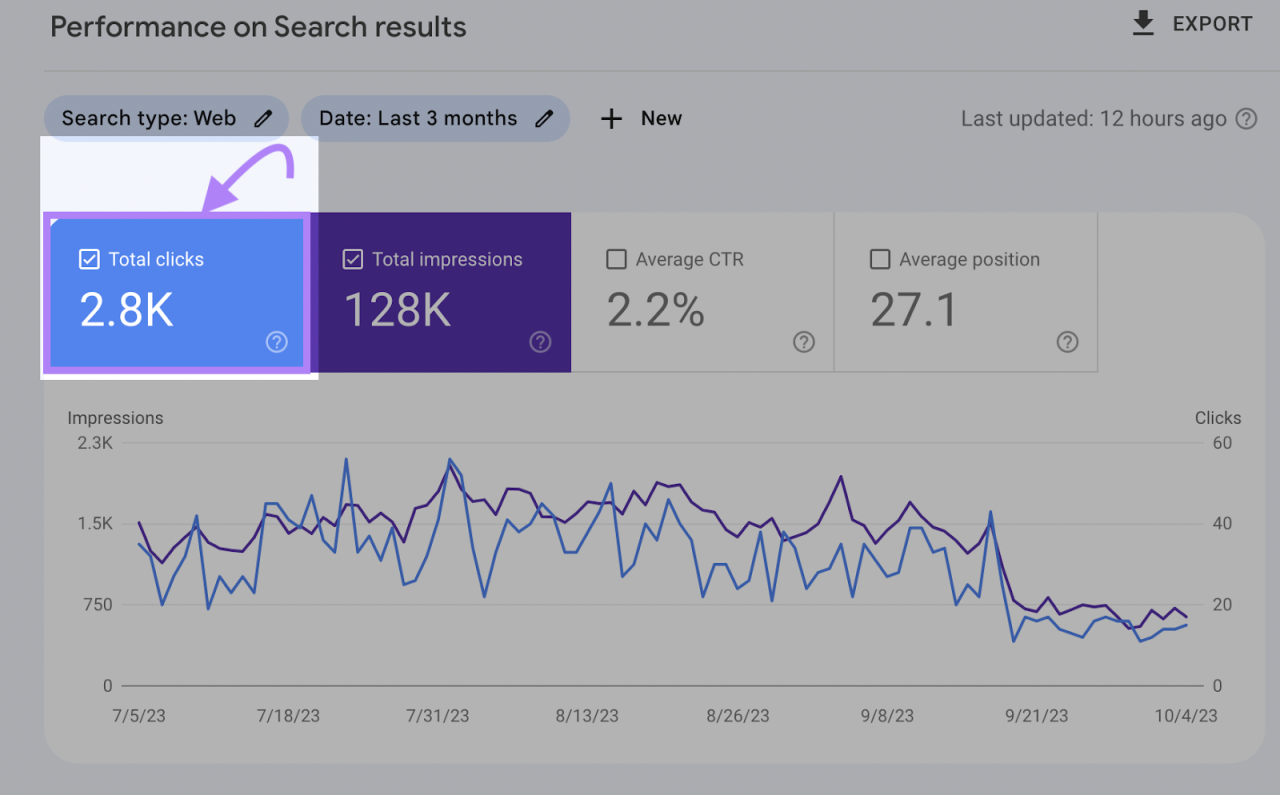
Understanding how customers search for your brand is crucial for effective marketing. Branded searches offer a unique window into customer needs, preferences, and pain points. This insight can be leveraged to optimize website content, tailor marketing campaigns, and ultimately drive sales. By analyzing branded search data, businesses can identify opportunities to improve their offerings and enhance the customer experience.
Leveraging Branded Searches to Understand Customer Needs
Analyzing branded search queries provides valuable insights into customer motivations and pain points. Customers often use branded searches to seek specific information about a product, service, or company. For instance, a search for “XYZ Company customer service” indicates a customer needing assistance. This information is crucial for identifying areas where customer service needs improvement or where product support documentation can be enhanced.
Tracking branded search terms allows businesses to identify recurring issues or questions, enabling proactive solutions and a better understanding of the customer journey.
Optimizing Website Content for Branded Searches
Optimizing website content for branded searches ensures that customers find the information they need quickly and easily. This involves incorporating relevant s and phrases associated with the brand into website copy, product descriptions, and blog posts. By including search terms directly related to the brand, businesses can improve search engine visibility for those specific searches. This ensures that customers searching for your brand are directed to the most relevant information on your website.
This also helps in establishing credibility and trust with potential customers. Consider using the brand name in meta descriptions and page titles to further enhance visibility.
Examples of Effective Branded Search Strategies
Several businesses have successfully implemented effective branded search strategies. For example, a company like “ABC Corp” might use branded searches to identify customer interest in specific product features. By analyzing search terms like “ABC Corp product X troubleshooting,” they can understand common problems associated with a particular product. This allows them to proactively address these issues with improved product documentation, tutorials, or customer support channels.
Another example is a retailer that observes a significant increase in searches for “Best-selling XYZ brand product.” This data can guide inventory decisions, marketing efforts, and product development strategies.
How Branded Search Data Can Inform Marketing Campaign Planning
Branded search data is a valuable resource for informing marketing campaign planning. By analyzing search volume and intent, businesses can identify areas of interest and tailor campaigns to address specific needs. For example, a surge in searches for “XYZ Company discount codes” suggests a potential demand for promotional offers. Marketing campaigns can be created to address this need, increasing engagement and conversions.
So, you’re diving into branded search, huh? It’s all about making your brand stand out in search results, right? But how do you get those valuable leads to actually convert? Knowing clever email capture tricks, like the ones detailed in this helpful guide on email capture tricks , is key. Ultimately, a solid branded search strategy, paired with effective lead nurturing, will set you apart from the competition.
Incorporating this data into campaign strategies ensures the marketing efforts are aligned with customer demand and interest.
Methods for Incorporating Branded Search Data into Marketing Dashboards
Integrating branded search data into marketing dashboards provides a comprehensive view of customer behavior and brand perception. Dashboards should display key metrics like search volume, trending s, and search intent. By visualizing this data, businesses can gain a holistic understanding of how customers interact with their brand. For instance, a dashboard might show the frequency of searches for specific products or services, allowing for real-time adjustments to inventory levels or marketing strategies.
Furthermore, it allows businesses to track changes in customer interest over time, offering insights for long-term marketing strategies.
Branded Search and
Understanding how people search for your brand is crucial for optimizing your online presence. Branded searches, those using your company name or product brand in their queries, offer valuable insights into customer needs and expectations. Effectively leveraging this data through practices can significantly boost your overall online visibility and drive targeted traffic.
The Connection Between Branded Search and
Branded search queries provide a direct measure of brand awareness and recognition. When users actively search for your brand, it signifies a potential customer actively considering your products or services. Optimizing for these searches ensures your brand is readily available when potential customers are actively looking for you, ultimately increasing the likelihood of conversion. This direct correlation underscores the importance of dedicated strategies focused on branded search.
How Optimizing for Branded Searches Impacts Overall Performance
Optimizing for branded searches, while seemingly focused on a specific query, can positively impact broader efforts. By consistently appearing at the top of branded search results, you establish authority and credibility. This strong presence can influence the ranking of other, non-branded s associated with your business, and contribute to higher organic visibility. The positive association of your brand with a strong search presence translates into a more comprehensive, higher-ranking organic presence.
How a Brand’s Online Presence Affects Branded Search Results
A brand’s comprehensive online presence, encompassing website quality, social media engagement, and online reviews, significantly influences its ranking in branded search results. A well-structured, informative website with high-quality content and a user-friendly design is more likely to rank higher in branded searches. Similarly, active and engaging social media channels that showcase your brand’s personality and values contribute to a positive brand image, influencing search results.
Positive reviews from satisfied customers further reinforce the brand’s credibility and desirability, thus enhancing its visibility in branded search results.
The Importance of Brand Consistency in Branded Search Results
Brand consistency plays a pivotal role in establishing a unified and trustworthy brand image across all search results. Inconsistencies in branding across different platforms – from website copy to social media posts – can confuse potential customers and ultimately negatively impact search visibility. Maintaining consistent branding, including logos, color schemes, and messaging, creates a cohesive brand experience, making it easier for users to recognize and trust your brand in search results.
This consistency fosters trust and reliability, making your brand stand out and reinforcing a positive brand image.
Procedures to Improve a Brand’s Visibility in Search Results
Several procedures can significantly enhance a brand’s visibility in search results. Firstly, regularly monitoring branded search queries and identifying any patterns or trends in search intent can provide valuable insights. Analyzing these trends allows for strategic adjustments to content and marketing campaigns, optimizing for specific customer needs. Secondly, consistently creating high-quality content that directly addresses common user queries associated with your brand is crucial.
Thirdly, encouraging positive online reviews and managing online reputation proactively can enhance the brand’s credibility and reinforce its positive image in search results. Finally, implementing a robust link building strategy to increase the authority and trustworthiness of your website and other online assets can further improve your search ranking and visibility.
Branded Search and Customer Experience
Your brand’s online presence isn’t just about visibility; it’s about how customers perceive your brand. Branded search results are a critical touchpoint, directly impacting the customer journey and ultimately, customer satisfaction. Positive results foster trust and loyalty, while negative ones can erode confidence and drive customers away. Understanding the impact of branded search on customer experience is paramount for any business.A positive branded search experience strengthens the connection between the brand and the customer.
When customers see accurate, up-to-date, and positive information about a brand, they’re more likely to trust and engage with that brand. Conversely, negative search results can lead to a loss of trust and potentially damage the brand’s reputation. Therefore, a brand’s online reputation management strategy should extend beyond just creating positive content; it should encompass actively monitoring and influencing branded search results.
Impact of Branded Search Results on Customer Experience
Customers form first impressions based on the information they find when searching for your brand. This initial impression can significantly impact their perception and subsequent interactions with your business. Whether it’s a product review, customer service feedback, or news related to your brand, these results contribute to the overall customer experience.
Examples of Negative Branded Search Results Affecting Customer Perception
Negative reviews, complaints, or outdated information can severely damage a brand’s reputation. For example, if a prominent search result for a clothing brand is a scathing review highlighting poor customer service, potential customers may hesitate to purchase from that brand. Similarly, if a product recall is a top result, it can instill distrust and negatively impact sales. Negative articles, competitor reviews, or even social media posts about your brand, if prominent in search results, can be damaging.
Branded search is crucial for brand visibility, but what about the content behind it? Understanding how Google indexes automatically translated content, like that generated by Chrome, is key. For example, if your brand’s content is automatically translated and indexed by Google, that impacts how search results appear for your specific brand. Knowing if Google indexes such content helps optimize branded search strategies and potentially enhance your brand’s visibility in international markets.
Check out this insightful article on does google index chrome and autogenerated translated content to delve deeper into this.
Strategies for Ensuring a Positive Customer Experience through Branded Search
Positive branded search results can be cultivated through a multi-faceted approach. This includes creating high-quality content, encouraging positive customer reviews, actively engaging with online communities, and promptly addressing any negative feedback. Implementing a robust social media presence can help manage brand perception, and fostering transparency builds trust. Monitoring and responding to mentions of your brand across various online platforms is crucial.
Addressing Negative Search Results Related to a Brand
Addressing negative search results requires a proactive and strategic approach. This involves identifying the source of the negative information, assessing its impact, and formulating a plan to counter the negative perception. If a negative review is causing concern, responding to it publicly with a sincere and helpful response can often mitigate its impact. If a negative article surfaces, a well-crafted, informative press release or blog post can offer a more balanced perspective.
In cases of misinformation, fact-checking and correcting the record through accurate, well-sourced information is vital.
Correlation between Branded Search Results and Customer Satisfaction
The correlation between branded search results and customer satisfaction is evident. A positive online presence, characterized by positive reviews, helpful resources, and a consistent brand voice, tends to lead to higher customer satisfaction scores. Conversely, a negative or confusing online presence can lower customer satisfaction.
| Branded Search Result | Customer Satisfaction |
|---|---|
| Positive reviews, accurate information | High |
| Negative reviews, misleading information | Low |
| Inconsistent or confusing brand voice | Moderate |
A positive correlation is evident: when the search results reflect a positive and helpful brand image, customer satisfaction increases. Negative results have the opposite effect. This data underscores the importance of actively managing and influencing your branded search results.
Branded Search and Competitor Analysis
Understanding your competitors’ branded search performance is crucial for refining your own strategies. It’s not just about identifying weaknesses; it’s about uncovering opportunities and proactively shaping your brand’s online presence. This analysis provides valuable insights into how your competitors are perceived online, allowing you to adjust your marketing efforts to better serve your target audience.Competitor branded search analysis offers a unique lens into the market dynamics.
It reveals not only how your competitors are positioned but also how customers perceive them. By scrutinizing this data, you can identify gaps in your own brand strategy and formulate effective countermeasures. This knowledge is vital for crafting a robust marketing plan.
Analyzing Competitor Branded Search Performance
Monitoring competitor branded search performance provides a window into their online reputation and customer engagement. Tracking search volume, search trends, and search intent associated with their brand reveals valuable insights. This data allows for a comprehensive understanding of how their brand is performing and how it is perceived by potential customers.
Monitoring Competitor Branded Search
Implementing robust monitoring strategies is essential for tracking competitor performance. Use tools designed for tracking performance, including branded search volume and related search terms. Regular monitoring allows you to identify shifts in customer perception, emerging trends, and the effectiveness of competitor marketing campaigns. This data-driven approach is paramount for informed decision-making.
- Employ dedicated tracking tools to monitor competitor brand names and associated s. This allows for proactive identification of changes in search volume and related search terms.
- Regularly analyze search trends to pinpoint emerging topics or issues related to your competitors. This information can be utilized to preemptively address potential problems or capitalize on opportunities.
- Track competitor search intent. Determine whether searches are informational, transactional, or navigational to understand how customers interact with their brand.
Identifying Competitor Brand Strengths and Weaknesses
A thorough analysis of competitor branded search reveals valuable insights into their strengths and weaknesses. This information can be used to improve your own brand positioning and marketing strategy. By examining their search data, you can uncover aspects of their brand that resonate with customers and identify areas where they might be falling short.
- Identify high-volume search terms associated with competitor brands. These terms can indicate popular features, services, or brand attributes.
- Analyze search results for negative sentiment or complaints. Address any recurring issues to improve customer satisfaction.
- Examine the types of questions customers ask about a competitor brand. Use this to identify areas where your brand can provide more comprehensive or helpful information.
Understanding Competitor Marketing Strategies
Analyzing competitor branded search data can reveal valuable insights into their marketing strategies. Changes in search volume, related s, or user queries often correspond to new marketing campaigns or initiatives.
- Identify new marketing campaigns by noting spikes in branded search volume and associated s.
- Assess the effectiveness of competitor campaigns by evaluating the engagement and search intent associated with their brand.
- Understand how competitors are responding to market trends by examining their search query data.
Improving Your Brand Strategies
Competitor analysis provides a roadmap for optimizing your brand’s marketing strategy. Understanding competitor strengths and weaknesses allows you to adjust your own brand positioning, messaging, and marketing efforts.
- Develop targeted content that addresses areas where your competitors are lacking or where there’s high customer demand.
- Highlight your brand’s unique value proposition by focusing on areas where you excel compared to competitors.
- Improve your strategy by incorporating s and search phrases relevant to your competitors’ brand strengths and weaknesses.
Branded Search and Evolving Technology
The digital landscape is constantly shifting, and branded search is no exception. New technologies, particularly artificial intelligence (AI) and machine learning, are rapidly reshaping how users interact with brands online and how brands themselves manage their online presence. This evolution is impacting everything from search results to marketing strategies, demanding adaptation from businesses to remain competitive.AI and machine learning are revolutionizing the way search results are personalized, allowing for more targeted and relevant experiences for users.
This shift isn’t just about efficiency; it’s about fostering a deeper understanding of user intent and preferences. The ability to analyze vast datasets and predict user behavior allows for a more sophisticated approach to branded search, leading to improved conversion rates and a stronger brand image.
Impact of AI and Machine Learning on Branded Search Results
AI and machine learning are being used to refine search results, moving beyond simple matching to understanding user intent and context. Algorithms analyze user history, search queries, and browsing patterns to personalize search results. This means that when a user searches for a specific brand, they’re more likely to see results tailored to their past interactions, current needs, and location.
For example, a user searching for “Nike running shoes” might see results specifically tailored to their preferred running type or distance based on past purchases or online behavior.
Personalization in Branded Search Results
Several approaches are employed to personalize branded search results. One method is through the use of user profiles that aggregate data from various sources, including website interactions, social media activity, and past purchase history. This aggregated data allows algorithms to understand the user’s preferences, needs, and pain points, which can then be used to display more relevant results.
Another method involves using AI to understand the context of a search query. For instance, if a user searches for “best laptop for gaming,” AI can analyze the user’s past searches and determine if they are looking for a specific gaming laptop model or a general recommendation. This context-aware personalization leads to a more relevant and engaging experience.
Voice Search and Branded Search Behavior
Voice search is rapidly changing how people interact with brands online. Instead of typing s, users now ask questions, and these queries often reflect a more conversational and exploratory approach. This shift demands a new understanding of search intent and strategies. For example, instead of searching “buy iPhone 14,” a user might ask “what’s the latest iPhone model?” Brands need to optimize their content for conversational queries, focusing on long-tail s and natural language.
Future Predictions for Branded Search
The future of branded search is likely to be even more personalized and context-aware. AI-powered search will become increasingly sophisticated, leveraging more data points to understand user intent with greater accuracy. This could lead to a shift in how brands interact with their customers, enabling more dynamic and engaging experiences. One example of this is the rise of conversational commerce, where users can directly interact with brands through voice search to make purchases or receive information.
Evolving Technology and Branded Search Strategies
Evolving technology demands a proactive approach from brands. Optimizing for voice search, implementing AI-driven personalization strategies, and continuously monitoring search trends are critical to success. Furthermore, brands need to invest in understanding and adapting to new technologies, including the potential of augmented reality (AR) and virtual reality (VR) in search experiences. The ability to adapt to new technologies will be crucial for maintaining a strong online presence and relevance.
Ultimate Conclusion
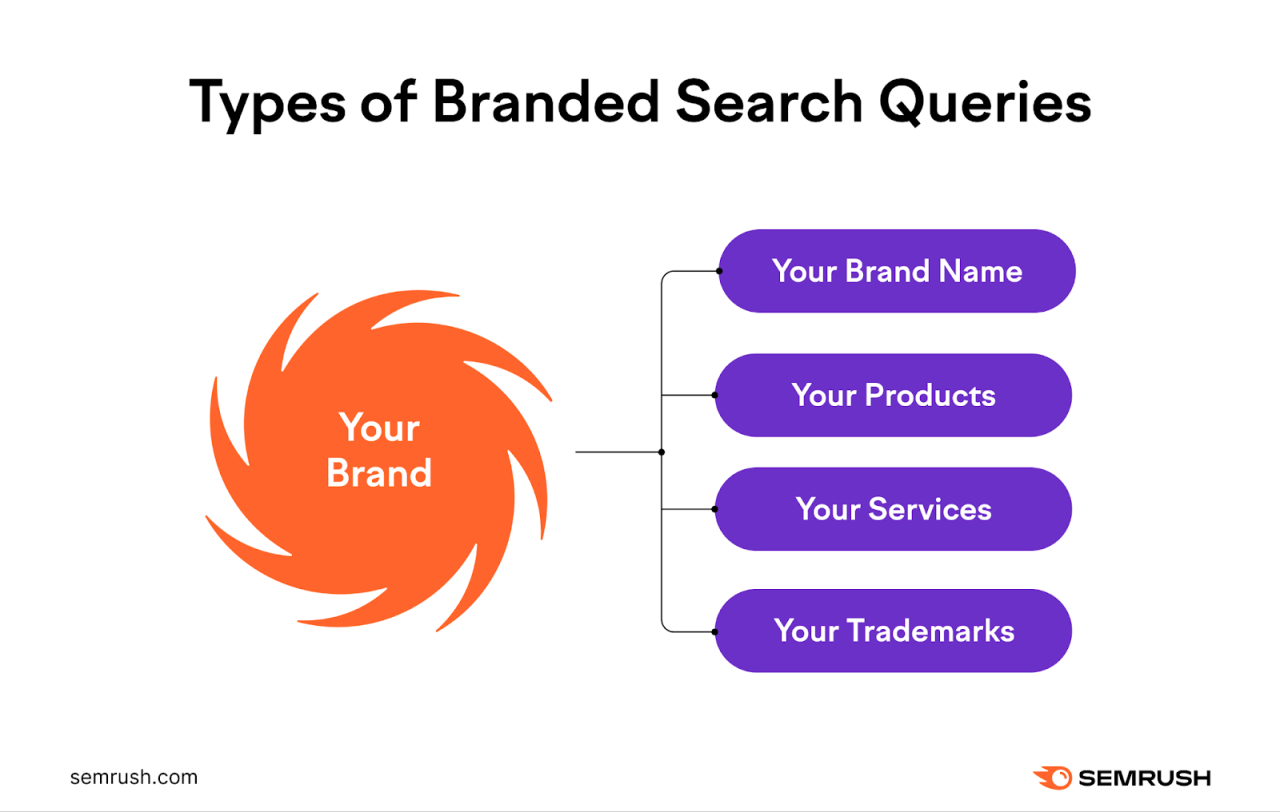
In conclusion, branded search offers a rich source of data for understanding customer needs, measuring brand performance, and informing marketing decisions. By meticulously analyzing branded search trends, intent, and user behavior, businesses can gain a competitive edge and craft targeted strategies for a positive customer experience. The future of branded search is evolving, and understanding these trends is paramount for staying ahead of the curve.
